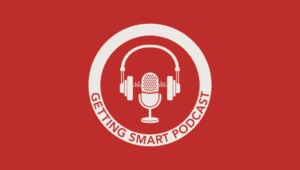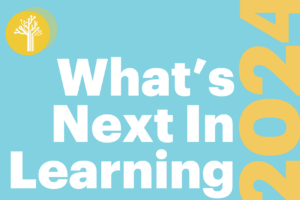On Becoming More Than Preparing: 10 Tips on Developing Humans

The importance of social emotional learning (SEL) — the ability to manage yourself, to collaborate with others and make good decisions — is widely recognized as key to success in life. But it’s not just about what students are preparing for it’s who they are becoming as people. It’s about being a better learner, team member, contributor, and friend tomorrow than you were today.
CASEL (Collaborative for Academic, Social, and Emotional Learning) recognizes that SEL programming is grounded in the understanding that the best learning emerges in the context of supportive relationships that make learning challenging, engaging and meaningful.
Accordingly, the SEL landscape will benefit if we focus on trends toward smart, mobile and action-orientation. These shifts are not binary in nature (most of these concepts must coexist to be effective). Rather they help inform development of resources, products, programs and implementation that truly will catalyze human growth.
SEL Trends: Smart, Mobile and Action Oriented
 1. Print >> Mobile. People are more likely to “grow on the go” than they are to sit behind a desk and read their way to personal improvement. Accordingly, SEL products and resources must be designed not only for portability, but also for personalization, gamification and smart nudges.
1. Print >> Mobile. People are more likely to “grow on the go” than they are to sit behind a desk and read their way to personal improvement. Accordingly, SEL products and resources must be designed not only for portability, but also for personalization, gamification and smart nudges.
2. Future >> Present. Too often, soft skill development amongst youth is framed as important because “employers will be looking for these things and it will help you 10 years from now.” A more compelling question that a well-architected SEL approach takes is, “How am I going to be better today (or tomorrow)?” And, yes, by practicing the future now, students will be learning for life and learning new skills for new jobs. Further, project-based learning and working together can help students experience the “real world” now rather than living in an artificial holding tank.
3. Integrated Contexts >> Discrete Contexts. Context matters. One student might naturally show stronger SEL skills at basketball practice than in math class. While there are some resources that are intentional about context-specific SEL (for example Productive Persistence focus within Carnegie’s Math Pathways or Academic Youth Development complementing Agile Mind’s Math), the vast majority of SEL resources don’t account for differing skills in differing contexts. The ultimate goal is development across contexts, and discrete contexts can help identify strengths.
4. Extrinsic Motivation >> Intrinsic Motivation. David Yaeger’s research shows that students who set goals with a high degree of self-focus were more likely to drop out of school than students who articulated more purpose-driven “change the world” goals. Purpose driven goals feed intrinsic motivation. Yaeger’s work was conducted in concert with Angela Duckworth and researchers from UT Austin, Notre Dame and Stanford: Boring But Important: A Self-Transcendent Purpose for Learning Fosters Academic Self-Regulation.
5. Knowing >> Doing. SEL, perhaps more than any subject, requires real-time doing – not just knowing what to do. Ironically, many SEL approaches are direct-to-teacher (helping teachers help students know how to act) rather than direct-to-student, where there are opportunities to practice skills. Happify and Class Dojo are examples of products that give students direct experience.
6. Cohort >> Personalized. If any subject matter should personalize it is SEL. This applies to recognizing that context matters, and also can help discern whether a student is struggling because they lack persistence or because they need work on a foundational concept in reading or math. Further, personalizing through a better understanding of who kids are outside of school (e.g. family structures, faith, interests, values and more) is key and necessitates improved communication amongst schools and families.
7. Restricted >> Scalable. The good news on the information above is that Dave Paunesku and other researchers are assessing the impact of customized interventions. Class Dojo and Stanford University Project for Education Research That Scales (PERTS) developed growth mindset intervention videos which have been viewed by over five million students.
Along with these shifts, it is important to hold in balance these important foundations for SEL:
8. Culture + Tools. The goal is to build a culture that catalyzes growth and provides every individual with the best opportunity to learn. Good tools can help but leadership key. For example, Mayerson Academy helps schools make the most of Happify, a mobile SEL app.
9. Powerful Learning Experiences + Measurement. There is much discussion currently about measuring SEL. Let’s acknowledge that it’s early and messy at this stage and not move too quickly to incorporate immature measures into accountability systems. Roger Weissberg of CASEL said, “Right now what would be most helpful would be a classroom focus on powerful learning and feedback systems for students and teachers.”
10. Academic Foundation + SEL Foundation. The title of a recent EdWeek article may be compelling, but can also be misleading: Nonacademic Skills Are the Necessary Foundation for Learning . The article makes some excellent points, including “If academic standards are what students must learn, certain social-emotional skills support how they learn.” Both are foundational.
Yes, preparing for 10 years from now is important, but let’s help students reflect on ways they can be a better learner, team member, contributor, and friend tomorrow (that’s like two marshmallows).
For more, see:
- 3 Reasons SEL Assessments Aren’t “Just Another Test”
- Celebrate the Flops (Then They Don’t Hurt So Much): 7 SEL Mindset Tips
- How 2 Minutes of SEL Can Change the Tone for the Day
Stay in-the-know with all things EdTech and innovations in learning by signing up to receive the weekly Smart Update. This post includes mentions of a Getting Smart partner. For a full list of partners, affiliate organizations and all other disclosures please see our Partner page.








Kelvin Jaward
I love motivation because it helps me motivate myself and others